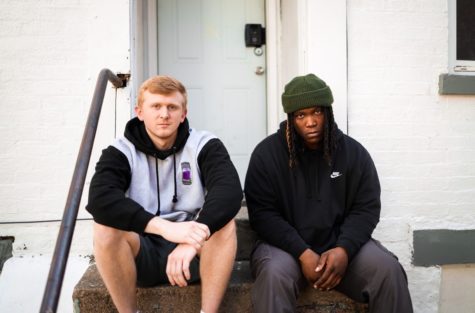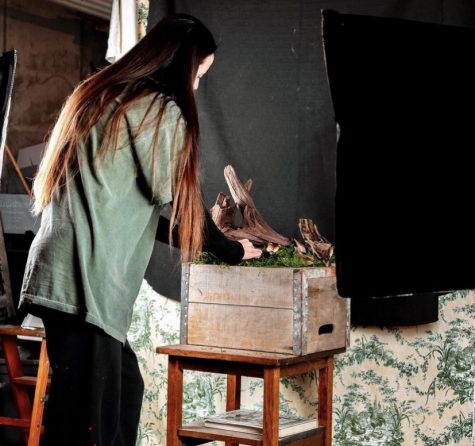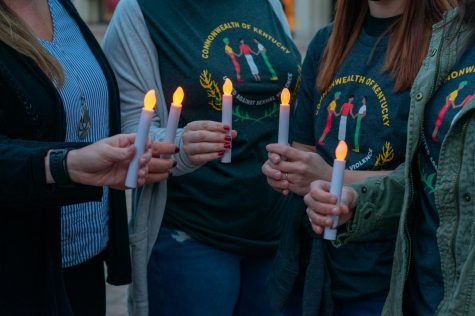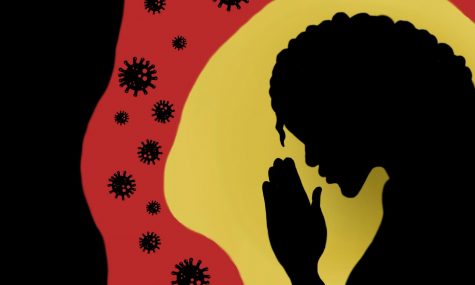Our ‘neat little jewel’ on campus

From the street, the cabin can be viewed when entering campus. The cabin is currently being restored.
After experiencing break-ins and families of raccoons residing inside, the cabin on campus is becoming something more.
Walking onto NKU’s campus, one can find a rustic cabin near the Honors House. However, many people don’t know where the cabin came from or why the university even has it.
“The cabin has always been a mystery to me,” Nick Garcia, senior stage management major said.
Garcia said that he always walked past it during his honors classes, but never knew what it was.
One class in the history department took on the task of researching and restoring the cabin on campus so the community would become more aware of what it is.
The cabin is believed to have been built in 1849 in Grants Lick, Kentucky, according to assistant professor of history, Brian Hackett.
“It had actually been incorporated into a larger house,” Hackett said. “The speculation is that they used it as a schoolhouse.”
Because not a lot of people had money at that time and they couldn’t send them to schools, it was normal for them to get together and have a schoolhouse that was run by someone in the community.
“At least that’s the local folklore about that,” Hackett said.
After the cabin was in Grants Lick for awhile, it was sold and moved to Alexandria, Kentucky. Following that, it was given to AJ Jolly around the national bicentennial in 1976.
The university’s archives then adopted it in the early 1980s.
“The university wanted to show that for education in Kentucky, we had gone from this wonderful one room schoolhouse basically to this modern university,” Hackett said.
The cabin remained on campus with minor restoration done to it. Through its time, it held a few exhibits, someone broke in once and a family of raccoons decided to take up residence.
When Hackett decided to take on restoring the cabin, he found that there was cement chinking in between the logs of the cabin. According the Hackett, this was the worst thing for the cabin because of the weather.
Before restoring it, Hackett had to pull it from the university archives’ ownership and give it to the university. The archives gave it to the university because they hadn’t been doing anything with it.
After that, Facilities Management took on maintaining the cabin. They then put on framing for the windows and a door.
Hackett now wants to furnish the cabin with benches and a blackboard. Currently, he is fundraising for those additions.
Hackett feels that the cabin could benefit students from all departments. For example, history classes and science classes could use it since some science classes use that forest behind it.
“You could actually use the cabin as an outdoor laboratory,” Hackett said. “They are also going to put in a public garden with native species.”
Hackett wants to expand it to organizations on campus and even into the community. He mentioned putting a fire pit by the cabin to encourage local Boy Scouts and Girl Scouts to check it out too.
“The goal is to make it more part of the community, part of the university,” Hackett said. “It’s been my experience to ignore something you’re not part of, but the more this building is part of who we are as a campus, the more it’ll be preserved and well loved.”
In order to make the restoration possible, Hackett’s class researched how to restore the cabin properly. Students spent time finding where to purchase the best wood and how to continue its upkeep.
NKU graduate and adjunct history teacher, Matthew Kelley was one of the students who helped with the restoration project while he was in the class.
Kelley said they were very fortunate to have Hackett working with them to learn about the cabin.
“He is kind of like the public history Yoda of this region,” Kelley said.
The main part that Kelley and the class restored was removing the cement chinking and the chicken wire.
“It was an invaluable opportunity to work hands on,” Kelley said.
At the end of the class, a giant book was created in how to maintain it and it was given to facilities management for future reference.
Kelley agreed that the cabin will serve the university and the community.
“I think it’ll be one of those neat little jewels on our campus that other campuses don’t have,” Kelley said. “We get a lot of knocks for looking like a prison.”
Hackett hopes for the best for the cabin and can’t wait to see how it’s used.
“Rather than an eyesore, it’s an icon,” Hackett said.












